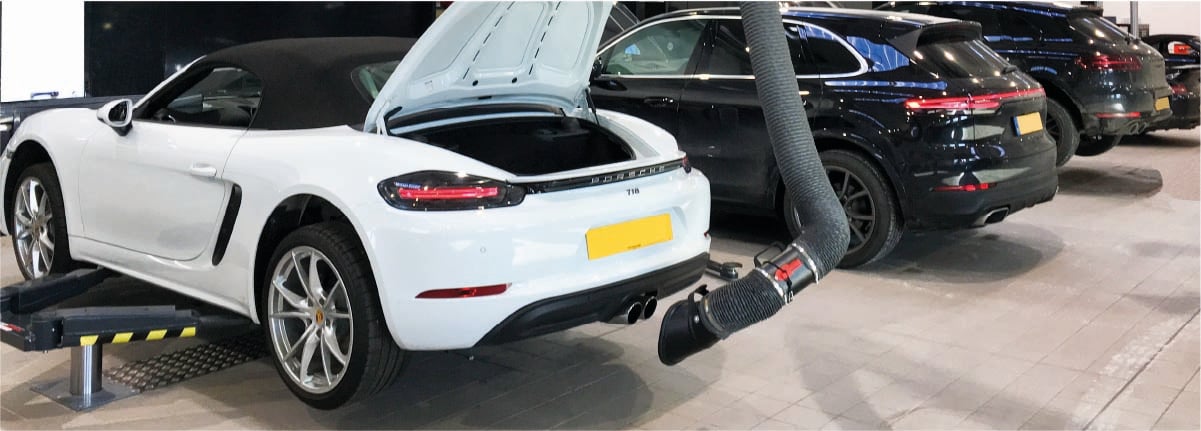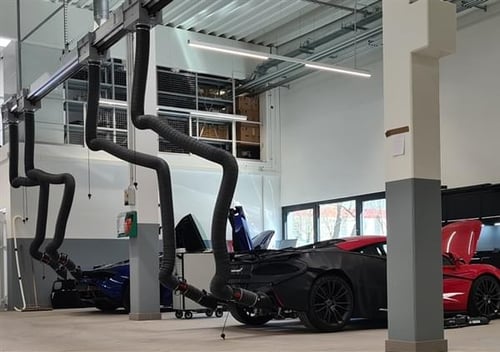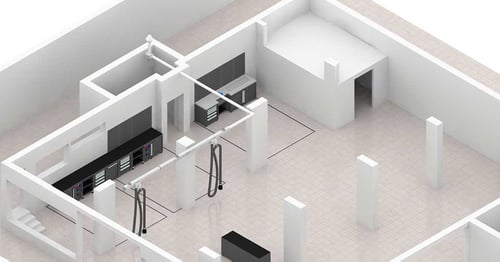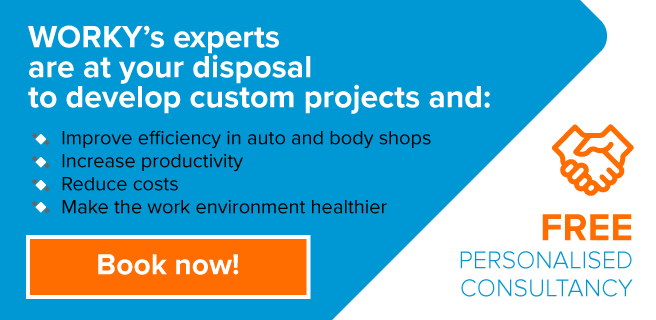 The quality of a car workshop - defined as tidiness, cleanliness, healthiness and the presence of innovative equipment and machinery - has a great influence on the efficiency, productivity and satisfaction of operators and customers. Creating an optimal working environment is therefore essential for business growth.
The quality of a car workshop - defined as tidiness, cleanliness, healthiness and the presence of innovative equipment and machinery - has a great influence on the efficiency, productivity and satisfaction of operators and customers. Creating an optimal working environment is therefore essential for business growth.
In today's article, we talk about how best to design a car repair shop.
Car workshop: steps for efficient design
Whether you want to build a car workshop from scratch or modernise an existing one, installing modern exhaust gas extraction systems is important to ensure that the available space is optimised.
Designing a car workshop means creating a comfortable environment, with equipment that is easy to use and ensuring that the premises are healthy and safe for the technicians and operators working there, and that it does not put their health at risk.
In car and truck repair shops, in fact, one of the greatest risks comes from exhaust gases expelled from mufflers during work.
Adequate exhaust systems are therefore essential to prevent harmful fumes from spreading into the environment and endangering the health of operators.
But how do you design a car workshop?
First of all, it is important to emphasise the importance of collaboration between customers and designers in the realisation of workshop gas extraction systems.
In fact, the project starts with viewing the workshop plans and listening to the customer's needs and objectives. This, in order to be able to create installations that are appropriate for their actual use.
It would make no sense, either functionally or economically, to install a very powerful fixed extraction system in a workshop where exhaust gas extraction takes place for limited periods of time, perhaps in different areas and not in a specific place.
While the design of the workshop must meet technical requirements, it must also be functional for the specific needs of the company.

After understanding the customer's needs, the second fundamental assessment is the space available.
In an efficient car workshop, space must be organised in such a way as to ensure that activities can be carried out correctly, leaving the operators as much freedom of movement as possible.
This is also why a careful assessment of the extraction systems to be installed must be made. Fixed systems will have a larger footprint than mobile, stand-alone or underfloor systems and therefore require a fairly large space available.
Underfloor systems are actually a special type of system: since they involve the integration of the plant underground, it is difficult to incorporate them into an already established workshop (because it would entail extensive renovation work and costs) and they are therefore usually evaluated when the workshop is designed from scratch.
To get an idea of the overall dimensions and layout of the equipment, a three-dimensional drawing of the car workshop is of great help.

By means of a photorealistic rendering, it is possible to get a precise idea of the location of the equipment in the workshop context, so that the customer can have a clear and complete view of the result before proceeding to purchase.
The last step in the design process is the actual assembly, followed by the after-sales service. In this phase, specialised personnel, in addition to handling any unforeseen events on site, must pass on to customers the necessary know-how for the correct use of the equipment in order to maximise productivity.
One of the key aspects in designing a car workshop is customisation. Each project is unique and must be tailor-made to meet the customer's needs.
Relying on an experienced supplier is essential to understand which exhaust gas extraction systems are best for your business and to position them in such a way that they optimise the available space and do not hinder the work of your staff, ensuring maximum productivity.
In addition to the quality of the products on offer, WORKY guarantees the presence of specialised technicians who design each exhaust system according to the workshop's needs.
We are constantly working to make business processes more efficient and innovative, developing customised projects tailored to the needs of each individual customer.
The highly qualified after-sales personnel have a great deal of experience not only in dealing with unforeseen events on site, but also in the phase preceding assembly.
If you have questions or would like to start planning your system, please do not hesitate to contact us: book a free, no-obligation consultation with our experts!



